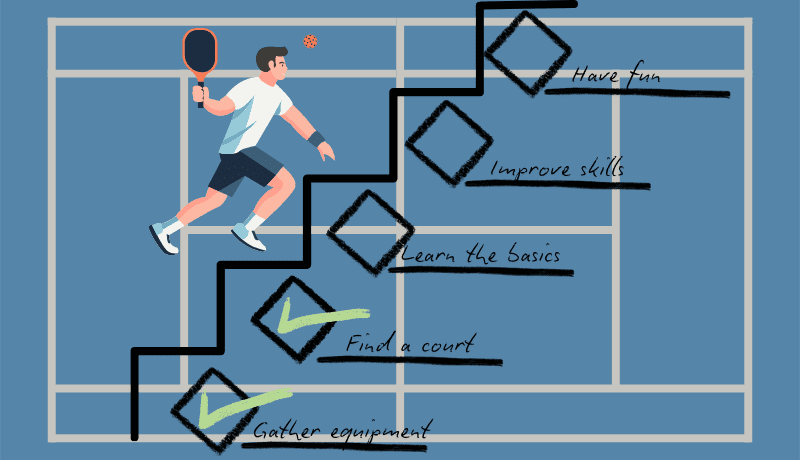How to Get Into Sports That Fits Your Life: Selection Criteria
How to choose the right sport? It’s hard to say, but I know for sure that a list of helpful criteria can make it easier to figure out. Let’s take a look at them.

At the Start of the Year, We All Want the Best for Ourselves
When reflecting on the past year, we plan for the new one. Naturally, we envision a better version of ourselves in the future. Recently, the “So List” blog featured a post about making and keeping New Year’s resolutions and one about pets of remote workers. These lovely companions can support our mental balance.
Since the organizational matters and morale are in check, we can turn to physical fitness and overall health. This article won’t recommend specific sports or fitness clubs. Instead, it offers a list of criteria to help narrow down the vast selection to a few manageable options.
I firmly believe that you can lose a lot in your life without engaging in sports. You’ll just have not enough physical power to do everything. So the goal is to lower the entry barrier as much as possible. In the words of the “Atomic Habits” [1], it’s about making the new habit attractive.
I am not a fitness writer, but I have books that can help. To approach the idea of sports from an organizational or even a productive perspective, we turn to another list-focused book. This one is written for school principals [2], and its list is titled “Criteria for Adding or Dropping Sports”. After reading this post, you’ll be able both to add new types of physical activity to your routine and evaluate the sports you already engage in.
Since the book is geared toward school principals, its advice can also apply to children.
The List of Criteria for Choosing a Sport
When selecting from the available sports, consider the following:
- Level of interest in particular sport,
- Costs involved,
- Availability of qualified coaching personnel,
- Availability and accessibility of appropriate facilities,
- Conflict or lack of conflict with other established sports,
- Opportunities for competition,
- Long-range prospects for continuation,
- Transferability of sports skills to life activities,
- Experience elsewhere with the sport.
Level of Interest in Particular Sport
If you find gym visits unappealing, don’t force yourself. Perhaps there are dance classes or bike trails nearby that seem more attractive and can help you fulfill your physical needs while not emptying your motivation.
The goal is to incorporate regular physical activity into life. There’s no need to make it feel daunting by choosing something uninteresting.
Costs involved
There are sports activities suitable for different budgets. It’s not necessary to purchase an expensive gym membership or invest in horseback riding to enjoy sports. Affordable options include home workouts with online videos, bodyweight exercises on outdoor fitness equipment, not to mention running. It might be even worth combining them so that you don’t have the only excellent key running muscles in the end, but the strong core as well.
Well, definitely running shoes will cost you some, but not as much as full hockey equipment.
Availability of Qualified Coaching Personnel
One significant risk of solo training is the potential for using improper techniques, leading to injuries or even chronic health issues. This consideration is especially important when picking a sport for your child. Unfortunately, children often view themselves as invincible, which doesn’t always align with reality. It’s better to protect children until they reach a more mature age.
Even without a personal trainer, it's important to seek proper guidance to avoid injuries and ensure effective training.
Also, besides lowering the risk of injuries, qualified trainer can help you create a training schedule that will help maximize your effort.
Availability and Accessibility of Appropriate Facilities
If a tennis court is two hours away, you might exhaust all your energy just getting there within a few weeks. A beautiful mental image doesn’t always yield the best results. There might be a slightly less appealing but far more convenient sports facilities near your home.
This article doesn’t aim to produce Olympic champions but provides busy individuals with tools to assess their sports aspirations. The desires of a busy person can easily be crushed by poor infrastructure.
Conflict or Lack of Conflict With Other Established Sports
If you already engage in sports, ensure the new activity aligns with your current routine. Issues might arise from logistics or health impacts. Two different sports could place significant strain on the same body parts, accelerating injury risk. Balancing resistance training and an intensive running schedule can help regulate the physical demands of different sports and prevent overuse injuries.
Opportunities for Competition
Some prefer solo activities, while others thrive on competition. Even as an amateur, you can enjoy the thrill of small-scale contests with local teams.
If competition matters to you, check whether the chosen sport offers such opportunities. Otherwise, you might end up as the only enthusiastic rock climber in a perfect running shape for miles around.
Long-Range Prospects for Continuation
Suppose you decide to become an ultra-marathoner with a barbell — running hundreds of miles while carrying heavy weights on your shoulders. Although the example is fictional, the question is real: how long could you sustain such a regimen? Probably not long even after extended strength training.
Since the goal is regular, long-term engagement in sports, choose activities you can stick with for years. So that you don’t have to take a long break from physical activity after overloading muscles.
Transferability of Sports Skills to Life Activities
Sports often bring inherent benefits: you can feel more confident or lose weight. Still, it’s worth considering its practical applications in real life. For instance, if you commute through a forest where aggressive squirrels pelt you with acorns, dodgeball, or table tennis might be the perfect sports for you. In the former, you’ll master the art of dodging; in the latter, you’ll excel at deflecting.
Deadlifts, on the other hand, might not help much — after all, you won’t uproot a tree no matter how much you bench press.
Experience Elsewhere With the Sport
Perhaps you used to participate in biathlon. It might make sense to return to cross-country or downhill skiing, even if shooting no longer appeals to you. If you were a runner and have taken a running break, it might make sense to return to running gradually, considering your experience.
Start slowly to go further. This might be a good running mojo.
Final Thoughts for Better Physical Fitness
Recently, I’ve become increasingly convinced that sports and the quality of life are inseparable. Eventually, anyone interested in their health will ask: “How can I move in a way that makes me feel better?”
I hope the above list of criteria helps. Of course, it’s not exhaustive, as it doesn’t account for everything. Assess your health, consider the contraindications of each sport, and align them with your current condition. Consulting a physical therapist can provide personalized advice and ensure a safe return to physical activity, especially if you've taken a break due to injury.
Whatever sports you choose, I wish you good health.
Thinking about sports happened to you just in the right time? Subscribe to the “So List” blog. There are many more useful lists and checklists to think about. Plus, you’ll discover how to solve various problems with these simple yet powerful tools.
List of Links
[1] James Clear, “Atomic Habits: An Easy & Proven Way to Build Good Habits & Break Bad Ones”, ISBN 978-0735211292
[2] Robert D. Ramsey, “The Principal’s Book of Lists”, ISBN 0-13-447749-9



